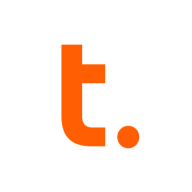

SAP BusinessObjects Business Intelligence Platform and Teradata compete in the business analytics and data management domain. SAP BusinessObjects has the upper hand in providing a comprehensive suite for business data consistency, while Teradata is favored for its high-speed analytics and scalability.
Features: SAP BusinessObjects offers ad-hoc reporting capabilities through Web Intelligence, robust data connectivity, and a semantic layer for consistent data. Users value its report and dashboard development tools. Teradata is recognized for its parallel processing, efficient handling of large datasets, and high-speed analytics capabilities.
Room for Improvement: SAP BusinessObjects users encounter difficulties with updates, integration, and a user-unfriendly interface. The licensing models are considered expensive. Teradata could improve cloud adoption, reduce costs, and enhance advanced analytics features.
Ease of Deployment and Customer Service: SAP BusinessObjects can be deployed on hybrid and on-premises infrastructures, with mixed reviews on deployment complexity and support. Teradata allows on-cloud and on-premises deployment, offering better customer service despite high pricing and complexity in setup.
Pricing and ROI: SAP BusinessObjects is often expensive with variable ROI based on usage and company size, deterring smaller businesses. Teradata is also costly but provides value to large enterprises needing robust data warehousing, making it worthwhile for large-scale operations despite high costs.


SAP BusinessObjects Business Intelligence Platform is a versatile and flexible solution for reporting and dashboards, focusing on analytics and ad hoc reporting. It can be deployed on-premise or in the cloud. The solution includes tools such as Web Intelligence, Crystal Reports, SAP Lumira, and Analytical Cloud and is primarily used for comprehensive business intelligence reporting.
The most valuable features include excellent reporting features, good technical support, scalability, and the ability to translate database data into business language. The solution has helped organizations by providing analytics, monitoring KPIs, and making important decisions as a financial business.
SAP BusinessObjects Business Intelligence Key Features
Reviews from Real Users
SAP BusinessObjects BI stands out among its competitors for a number of reasons. Several major ones are its user-friendly dashboard, its impressive reporting and analytic features, and its ability to integrate with multiple solutions.
A managing partner at a tech services company writes, "One of the most valuable features of SAP BusinessObjects is that it's not a dashboarding solution. It's a real product. You can create operational reports and publish it to anyone. You can create schedules. You can create a Universe, semantic layers. There's also a security configuration. It's a huge product, so if there is a business need, SAP BusinessObjects can cover it."
An associate manager at a consultancy notes, "It provides flexibility for creating reports. It is very good for creating highly complex reports. I like this solution because when I buy BusinessObjects, it comes with many components, such as reporting, dashboard, and data visualization tools. Its performance is good. It is running on top of SAP BW and SAP HANA."
A manager of data analytics and interfaces at a healthcare company says, "It has got great flexibility. As a reporting tool, it has a great deal of flexibility for numerous data resources that you can bring into it. It allows you to write your SQL query directly within the product. It has great visualization.
Teradata is a scalable data analytics platform designed to meet enterprise demands for large-scale data management and processing, focusing on performance, scalability, and security for complex query executions.
As a leading data warehousing solution, Teradata integrates advanced analytics enabling organizations to derive insights from massive datasets. It supports high-volume data workloads with its architecture optimized for analytical queries. Users benefit from its robust scalability, allowing seamless expansion as data grows. Teradata's SQL engine is compatible with a wide range of data types, ensuring flexibility in data analysis. With advanced security measures, it protects sensitive data across various environments, providing peace of mind to users handling critical information.
What are the most important features of Teradata?Teradata is widely used in industries like finance, telecommunications, and healthcare, where data-driven decisions are critical. Companies leverage its robust analytics capabilities to enhance customer experiences, streamline operations, and ensure compliance with regulatory requirements. In these sectors, quick access to data insights can significantly impact competitive advantage.
We monitor all BI (Business Intelligence) Tools reviews to prevent fraudulent reviews and keep review quality high. We do not post reviews by company employees or direct competitors. We validate each review for authenticity via cross-reference with LinkedIn, and personal follow-up with the reviewer when necessary.